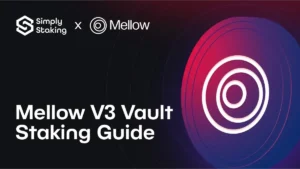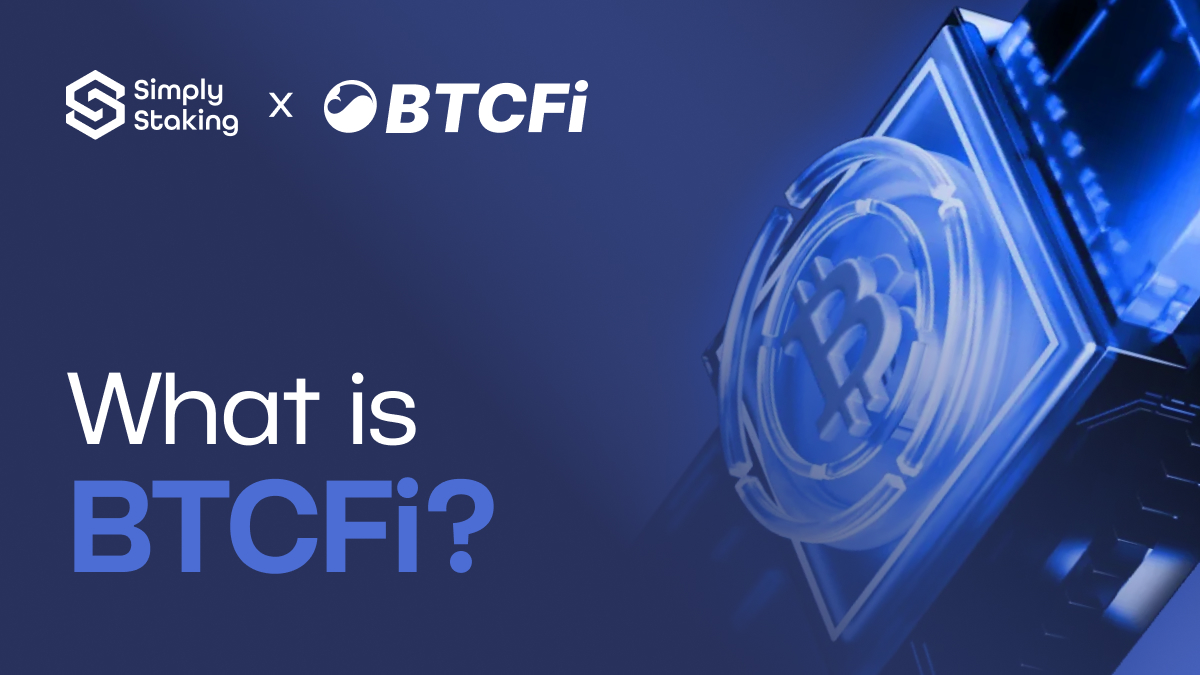The term ‘Restaking’ has been on everyone’s mind since rising to prominence in the last half of 2023. In essence, Restaking allows using staked ETH to secure other protocols and earn rewards. Please note that Restaking has also expanded to other tokens since EigenLayer managed to captivate the minds of the masses. One of EigenLayer’s blog posts highlights the simplicity behind the idea of restaking by naming the blog ‘You could’ve invented EigenLayer’.
Read more from our Ethereum Staking series:
- Ethereum Pectra: Whats behind the Ethereum Upgrade
- Simply Staking and Lido V3
- Lido: a technical Overview
- How to stake on Lido
- How to Stake on Stakewise
- ETH staking yield
- Ethereum Staking
The actual mechanics behind Restaking is more complex, especially with the addition of AVS. We have multiple previous research articles Introducing EigenLayer and a Deeper dive on EigenLayer.
This article is more of an analytical overview of the current landscape of Restaking and how it is empowering a new narrative with enhanced capital efficiency over traditional staking within, not only Ethereum but across multiple Ecosystems.
Restaking is the next evolution of staking
Most analysts (including the author of this article) expect that more than 50% of all staking TVL for Ethereum will be restaked by the end of 2024.
The DeFi scene on Ethereum was rather flat over the past couple of months before the announcement of EigenLayer. However, with the promise of extra yield on Native and even Liquid Staked Tokens (LSTs), and the potential hints at an airdrop (thanks to EigenLayer Points), a lot of activity and TVL has shifted towards Restaking, Liquid Restaking, and Liquid Restaking Tokens (LRTs).
EigenLayer TVL
As another batch of caps was increased for Liquid Staked Tokens, the TVL on EigenLayer soared and is now over $7BN in TVL. This is an incredible feat considering that the TVL in mid-December was still at $250M.

Thanks to the recent increase in TVL, EigenLayer has more Value-locked than Uniswap and AAVE and is now ranked 3rd largest protocol in Ethereum TVL.

Different Types of Restaking
Within EigenLayer, there are multiple ways of restaking. On their platform, users are presented with 2 different methods.
Those are through Native Restaking (Beacon Chain Ether) or Liquid Restaking utilizing different Liquid Staked Tokens (LSTs) available on Ethereum and supported by EigenLayer.
Native Restaking currently accounts for 28% of total TVL, with the remaining 72% coming from Liquid Restaking.
Native Restaking
Native Restaking would involve creating a validator with 32 ETH creating your own EigenPod and changing your validator withdrawal credentials to your EigenPod address.
An interesting statistic was recently shared stating that 1 out of every 4 Ethereum Validators joining the Validator Queue have set their withdrawal credentials to an EigenPod in the past 30 days highlighting that Validators are seeking extra yield through restaking.

Liquid Restaking
EigenLayer usually caps the amount of Liquid Staking Tokens that are allowed at a time. This is done as a precautionary measure. As we saw from the initial TVL chart, a spike in TVL occurs when EigenLayer increases those caps.
Recently, on the 5th of February, EigenLayer uncapped all deposits and the inflows of Liquid Staked Tokens skyrocketed and even surpassed $1BN on the first day of uncapping.
This was until the 9th of February when they subsequently announced that all deposits from LSTs would be paused in anticipation of the Operator and Eigen DA Mainnet launch.

LST Statistics
EigenLayer currently accepts the following LSTs:
- $stETH (Lido)
- $rETH (Rocket Pool)
- $cbETH (Coinbase)
- $wBETH (Binance)
- $osETH (Stakewise)
- $swETH (Swell)
- $AnkrETH (Ankr)
- $EthX (Stader)
- $OETH (Origin ETH)
The graph below highlights the amount of TVL each LST is accounting for (The figures are adjusted to represent 100% — actual TVL % is lower since LSTs make up 72% of total TVL.):
It comes as no surprise that the most widely used LST asset, STETH from LIDO, accounts for 55.4% of all Liquid Restaking TVL. This is followed by Swell’s SWETH at 12.3% and Mantle’s METH at 11%.
Liquid Restaking Protocols
What are they — What are LRTs
Liquid Restkaing Protocols or ‘LRTs’ allow users to stake their Native ETH or Liquid Staked ETH (on select protocols) through the respective platform, which is then staked on EigenLayer, and in return get a liquid or non-liquid token to be used further in other DeFi applications.

This has gained a lot of popularity for 2 main reasons:
- The chance of finding extra yield on top of the staking + restaking yield
- Since the ETH is staked on EigenLayer, people will earn EigenLayer points on top of platform points (as most LRT Protocols have their own points system).
There are a plethora of new Liquid Restaking Protocols launching due to the amount of hype however, we will focus our analysis on some of the largest for the time being. This includes EtherFi, Puffer Finance, Renzo Protoco,l and Kelp DAO.
EtherFi
ether.fi is the largest Liquid Restaking Protocol out there. We briefly covered EtherFi in our previous article on EigenLayer.
With EtherFi, once you stake your native ETH or other liquid-staked forms of ETH on the platform, you will receive ‘eETH’ that can be used in other forms of DeFi.

Since the beginning of December, the TVL of EtherFi has gone from $51.9M to $1.21BN. This impressive climb in TVL can be attributed not only to the number of people wishing to restake but also thanks to the many partnerships that the protocol has made. This includes the partnerships with Pendle.
Renzo Protocol
Renzo is a Liquid Restaking Token (LRT) and Strategy Manager for EigenLayer. Renzo’s natively issued restaked token is ‘ezETH’.
Renzo is the first protocol to bring cross-chain restaking to other networks. With their partnership with Connext, Users can restake natively their ETH on Arbitrum.
On Renzo, users have the option to either restake their native ETH immediately (since this is an uncapped pool) or deposit stETH (LIDO) or wBETH (Binance) once those pools allow for deposits to happen.
Currently, the TVL on Renzo has steadily grown to $316M in less than 2 months.

Puffer Finance
Puffer is the second-largest liquid restaking protocol after EtherFi. Launched on the 1st of February, the protocol now has $960M in TVL.

Almost a Billion Dollars worth of ETH has been restaked in the space of 2 weeks on Puffer. The native liquid restaking token that Puffer issues is called ‘pufETH’ and as is the case will all of the other protocols, this can be used to explore further opportunities in DeFi whilst still earning EigenLayer points.
On the first day of launch, the protocol managed to attract over $140M worth of ETH deposits. The rapid rise in TVL could be somewhat attributed to airdrop farmers as Puffer has been running a five-stage points program that gives points to those depositing their assets and interacting with the platform rather than just restaking points.
KelpDAO
With their native restaked token, rsETH, Kelp DAO has managed to amass a TVL of $455M since launch.

Kelp DAO has support for native ETH as well as ETHx (Stader), stETH (LIDO), and sfrxETH (Frax).
With Partnerships with Pendle and their rsETH token on Arbitrum, Kelp DAO is another protocol to watch out for in terms of TVL.
Liquid Restaking Tokens TVL
The below covers the Top 4 by TVL Liquid Restaking Protocols currently operating. This list is not exhaustive and as mentioned previously, more are being released.

Conclusion
We have seen explosive growth with the Restaking narrative that EigenLayer brought to the masses on Ethereum. New primitives and new ways to utilise restaked ETH are coming to light as we speak.
The growth in TVL can be expected to keep on its path with the mainnet launch of Operators and AVSs on EigenLayer.
This analytical article explored the current EigenLayer landscape and what can be said to be a driving force behind the explosive growth. To reiterate, a brand new narrative with the promise of extra yield and a possible airdrop scheme is a surefire way to bring attention to your protocol.
In our future articles, we look forward to revisiting these statistics as well as exploring the respective Protocols utilising EigenLayer underneath.
DISCLAIMER: The information provided in our research and content is for informational purposes only and should not be considered as financial or investment advice. Any decision to invest or engage in financial activities is solely your responsibility. We do not endorse or recommend any specific investment strategy, and individuals should conduct their research and seek professional advice before making any investment decisions. We are not liable for any financial loss, damage, or inconvenience resulting from the use of our content for investment purposes. Always be aware of the risks associated with financial markets, and carefully consider your financial situation and risk tolerance before making any investment choices.


























































